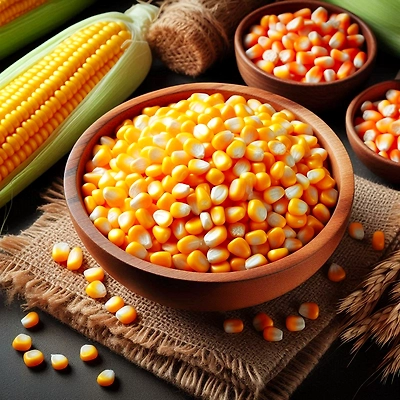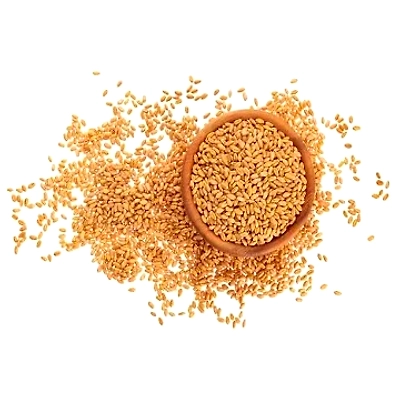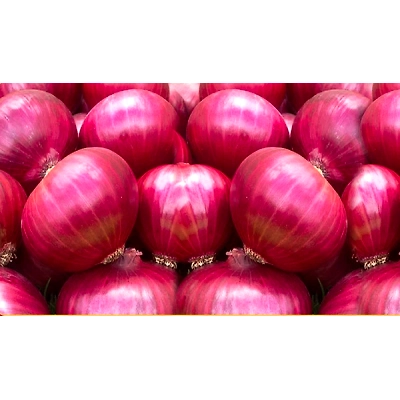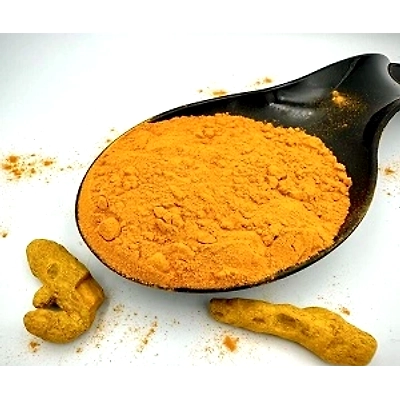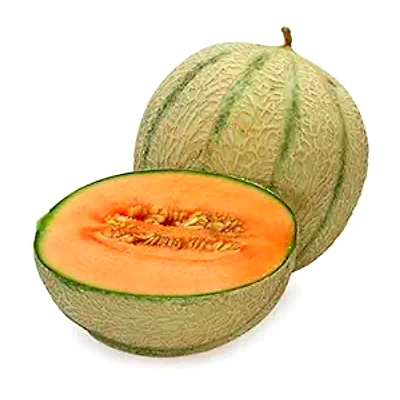Coco Peat
Coco peat, also known as coir pith or coconut coir, is a versatile growing medium made from the fibrous husks of coconuts. It is widely used in horticulture and agriculture for its excellent water retention, aeration, and nutrient-holding properties. Here's a description along with some specifications:
Description:
Coco peat is a natural byproduct of the coconut industry. It is obtained from the fibrous husk surrounding the coconut shell. The husks are processed to remove long fibers, leaving behind the finer material known as coco peat. This material is then cleaned, dried, and compressed into various forms such as blocks, bricks, or loose particles.
Specifications:
Moisture Content: Typically, coco peat has a moisture content ranging from 10% to 20%. It is essential to maintain this moisture level for optimal plant growth.
pH Level: Coco peat usually has a slightly acidic to neutral pH, typically ranging from 5.5 to 6.5. This pH range is suitable for a wide variety of plants.
EC (Electrical Conductivity): The electrical conductivity of coco peat is an indicator of its salt content. Low EC levels are desirable for most plants, as high levels of salts can be harmful. Coco peat typically has an EC ranging from 0.5 to 1.0 mS/cm.
Compression Ratio: Coco peat is often sold in compressed forms such as blocks or bricks. The compression ratio indicates how much the material expands when rehydrated. It varies depending on the compression method and can range from 5:1 to 10:1.
Particle Size: Coco peat can be obtained in various particle sizes, from fine to coarse. The particle size affects properties such as aeration and water retention. Fine particles provide better water retention, while coarse particles offer improved aeration.
Expansion Volume: When coco peat blocks or bricks are rehydrated, they expand to several times their original volume. The expansion volume depends on factors such as compression ratio and moisture content.
Fiber Content: Coco peat may contain some residual fibers from the coconut husks. The fiber content can vary depending on the processing method and affects properties such as drainage and structural stability.
Organic Matter: Coco peat is rich in organic matter, which helps improve soil structure and fertility. It also provides a habitat for beneficial microorganisms that aid in plant growth.
Cereals
Maize
Maize, commonly known as corn, is a cereal grain that belongs to the grass family. It is widely cultivated for its edible seeds, which are commonly used in various food products, animal feed, and industrial applications. Maize kernels vary in color, including yellow, white, red, purple, and blue, and they can be processed into numerous products such as flour, meal, grits, and oil.
Chilli
Product: Chili (Chilli Pepper)
Description:
Chili, also known as chili pepper or hot pepper, is a fruit of plants belonging to the Capsicum genus. It is widely used as a spice to add heat and flavor to various cuisines around the world. Chilies come in different shapes, sizes, colors, and levels of spiciness, ranging from mild to extremely hot.
Specifications:
- Variety: There are numerous varieties of chili peppers cultivated globally, each with its unique characteristics in terms of shape, size, color, and spiciness. Common varieties include Jalapeño, Habanero, Thai Bird's Eye, Cayenne, and Serrano, among others.
- Scoville Heat Units (SHU): The Scoville scale measures the spiciness or heat level of chili peppers. It quantifies the amount of capsaicin, the compound responsible for the sensation of heat. The SHU can vary widely depending on the chili variety, ranging from mild to extremely hot.
- Size: Chili peppers come in various sizes, ranging from small to large, depending on the variety. Size specifications may be required by buyers for consistency in cooking or processing.
- Color: Chili peppers exhibit a wide range of colors, including green, yellow, orange, red, purple, and brown, depending on the maturity stage of the fruit. Color specifications may be important for visual appeal and market preferences.
- Shape: Chili peppers can be long, slender, round, conical, or wrinkled, depending on the variety. Shape specifications may be relevant for culinary uses, processing, or presentation.
- Flesh Thickness: The thickness of the flesh of chili peppers can vary between varieties and may affect texture and flavor. Thick-fleshed varieties are preferred for stuffing or roasting, while thin-fleshed varieties are suitable for drying and grinding into chili powder.
- Shelf Life: Chili peppers should have a sufficient shelf life to maintain freshness and quality during storage and transportation. Proper handling, storage conditions, and packaging are essential for extending shelf life.
- Pesticide Residue: Chili peppers should comply with maximum residue limits (MRLs) for pesticides and other chemical contaminants established by regulatory authorities to ensure food safety.
- Packaging: Chili peppers are typically packed in various packaging options such as mesh bags, cartons, or crates for transportation and retail display. Packaging specifications may vary based on market requirements and shipping logistics.
- Origin: The origin of chili peppers should be clearly labeled to ensure traceability and compliance with import regulations.
- Grade: Chili peppers may be graded based on size, color, and quality standards. Grades such as Grade A, Grade B, or Fancy Grade may be used to classify chili peppers according to quality parameters.
Wheat
Product: Wheat
Description:
Wheat is one of the most widely cultivated cereal grains globally and serves as a staple food for millions of people worldwide. It belongs to the Triticum genus and is known for its versatility in various culinary applications, including bread making, pasta production, and as a cereal grain for human consumption and animal feed.
Specifications:
- Variety: Wheat comes in different varieties, each with its unique characteristics, including hardness, protein content, and gluten strength. Common varieties include hard red winter wheat, hard red spring wheat, soft red winter wheat, and durum wheat.
- Protein Content: Protein content is a crucial specification for wheat, especially for baking purposes. It typically ranges from 10% to 14%, with higher protein content preferred for bread-making flour.
- Moisture Content: Wheat should have a moisture content ranging from 10% to 14% to ensure optimal storage and milling quality.
- Gluten Strength: Gluten is essential for dough elasticity and bread structure. The gluten strength of wheat can vary depending on the variety and protein content.
- Test Weight: Test weight is a measure of wheat density and is expressed in pounds per bushel (lbs/bu). It indicates the quality and milling characteristics of wheat, with higher test weights preferred.
- Foreign Matter: Wheat should be free from foreign matter, such as dirt, stones, chaff, and other impurities.
- Damaged Kernels: The percentage of damaged kernels should be minimal, as damaged kernels can affect the quality and milling efficiency of wheat.
- Falling Number: Falling number is a measure of wheat starch quality and indicates its suitability for bread-making. A higher falling number indicates better starch quality and is preferred for baking purposes.
- Origin: The origin of the wheat should be clearly specified to ensure traceability and compliance with import regulations.
- Packaging: Wheat is typically packaged in bulk containers, sacks, or bags, depending on customer preferences and shipping requirements.
- GMO Status: Non-GMO or GMO-free status may be specified based on buyer preferences and regulatory requirements.
Onions
Product: Onion
Description:
Onion is a widely cultivated vegetable belonging to the genus Allium. It is known for its pungent flavor and is used in various culinary dishes worldwide. Onions are versatile and can be consumed raw, cooked, or processed into various food products such as sauces, soups, and condiments.
Specifications:
- Variety: There are different varieties of onions cultivated worldwide, each with its unique flavor, size, and color characteristics. Common varieties include yellow onions, red onions, and white onions.
- Size: Onions come in various sizes ranging from small to jumbo, with diameters typically measured in inches or centimeters. Size specifications may vary based on market preferences and customer requirements.
- Color: The color of onions can vary depending on the variety, with yellow, red, and white being the most common colors. Specific color requirements may be specified by buyers.
- Shape: Onions can be round, oval, or elongated in shape, with shape specifications sometimes required by buyers for aesthetic or processing purposes.
- Skin Quality: Onions should have firm, dry, and intact skins without any signs of mold, sprouting, or damage. Skin quality is essential for storage and shelf life.
- Bulb Firmness: Onions should have firm bulbs without any soft spots or signs of decay. Firmness is an indicator of freshness and quality.
- Moisture Content: Onions should have a moderate moisture content to ensure freshness and prevent dehydration. Excessive moisture can lead to sprouting and spoilage.
- Pungency: Onions are known for their pungent flavor, which is attributed to sulfur compounds. Pungency levels may vary between onion varieties and can be specified by buyers.
- Shelf Life: Onions should have a sufficient shelf life to maintain quality during storage and transportation. Proper handling and storage conditions are essential for extending shelf life.
- Packaging: Onions are typically packed in mesh bags, crates, or cartons for transportation and retail display. Packaging specifications may vary based on market requirements and shipping logistics.
- Origin: The origin of onions should be clearly labeled to ensure traceability and compliance with import regulations.
- Grade: Onions may be graded based on size, skin quality, and appearance. Grades such as Grade A, Grade B, or Fancy Grade may be used to classify onions according to quality standards.
Turmeric Power
Product: Turmeric Powder
Description:
Turmeric powder is a ground spice derived from the rhizomes of the turmeric plant (Curcuma longa). It is widely known for its vibrant yellow color, earthy flavor, and numerous health benefits. Turmeric powder is a key ingredient in many cuisines worldwide and is also used for its medicinal properties and as a natural food coloring agent.
Specifications for Export:
- Color: Turmeric powder should have a bright yellow-orange color, indicating freshness and high curcumin content. The intensity of color may vary depending on the variety and processing method.
- Curcumin Content: The curcumin content is a crucial specification for turmeric powder, as it determines the potency and health benefits of the spice. Export-quality turmeric powder should have a minimum curcumin content of 3-5%, although higher concentrations are preferred for medicinal and culinary uses.
- Aroma: Turmeric powder should have a strong, aromatic fragrance characteristic of fresh and high-quality spices. A pungent, earthy aroma is typical of turmeric and indicates freshness.
- Flavor: Turmeric powder should have a distinct, slightly bitter flavor with subtle hints of pepper and ginger. The flavor profile may vary slightly depending on the variety and origin of the turmeric.
- Particle Size: Turmeric powder should have a fine texture with consistent particle size suitable for culinary applications and ease of blending. Fine grinding ensures uniform distribution of flavor and color in dishes.
- Moisture Content: Turmeric powder should have a low moisture content to prevent clumping, mold growth, and deterioration during storage and transit. The maximum moisture content is typically around 10%.
- Ash Content: The ash content of turmeric powder is an indicator of purity and should be within acceptable limits (usually below 8-9%).
- Microbiological Standards: Turmeric powder should comply with microbiological safety standards, including limits for total bacterial count, yeast, molds, and pathogens such as Salmonella and E. coli. Regular testing and certification may be required to ensure compliance with food safety regulations.
- Packaging: Turmeric powder is typically packed in moisture-resistant packaging such as laminated pouches, plastic jars, or metal tins to maintain freshness and prevent moisture absorption. Packaging should be sturdy and sealable to prevent contamination and spoilage during transit.
- Origin: The origin of turmeric powder should be clearly labeled on packaging to ensure traceability and compliance with import regulations. Documentation verifying origin may be required for customs clearance.
- Shelf Life: Turmeric powder should have a sufficient shelf life to maintain quality and potency during storage and transit. Proper packaging, storage conditions, and handling practices are essential for extending shelf life.
Cumin
Product: Cumin Seeds
Description:
Cumin seeds are the dried seeds of the Cuminum cyminum plant, which belongs to the parsley family. They are widely used as a spice in various cuisines worldwide, known for their distinctive aroma, warm flavor, and culinary versatility. Cumin seeds are also valued for their medicinal properties and are used in traditional herbal remedies.
Specifications for Export:
- Purity: Cumin seeds should be clean and free from foreign matter, such as dirt, stones, stems, and other impurities. High purity ensures the quality and marketability of the product.
- Color: Cumin seeds should have a uniform brown color, indicating maturity and proper drying. Any discoloration or off-color seeds should be minimal.
- Aroma: Cumin seeds should have a strong, aromatic fragrance characteristic of fresh and high-quality spices. The aroma should be spicy, earthy, and slightly bitter.
- Flavor: Cumin seeds should have a bold, warm flavor with a slightly nutty and peppery undertone. The flavor should be intense and well-balanced, without any signs of staleness or rancidity.
- Oil Content: Cumin seeds should have a moderate oil content, which contributes to their aroma, flavor, and nutritional value. The oil content is typically around 4-5% but may vary depending on the variety and growing conditions.
- Moisture Content: Cumin seeds should have a low moisture content to prevent mold growth, deterioration, and insect infestation during storage and transit. The maximum moisture content is usually around 10%.
- Size: Cumin seeds come in different sizes, ranging from small to medium. Export-quality cumin seeds should have a uniform size, with minimal variation to ensure consistency in cooking and processing.
- Shape: Cumin seeds are elongated and oval-shaped with ridges. They should be well-formed and uniform in shape, without any deformities or irregularities.
- Foreign Matter: Cumin seeds should be free from foreign matter, such as chaff, husks, and broken seeds. Any extraneous matter should be minimal and within acceptable limits.
- Microbiological Standards: Cumin seeds should comply with microbiological safety standards, including limits for total bacterial count, yeast, molds, and pathogens such as Salmonella and E. coli. Regular testing and certification may be required to ensure compliance with food safety regulations.
- Packaging: Cumin seeds are typically packed in moisture-resistant packaging such as laminated pouches, polypropylene bags, or jute bags to maintain freshness and prevent moisture absorption. Packaging should be sturdy and sealable to prevent contamination and spoilage during transit.
- Origin: The origin of cumin seeds should be clearly labeled on packaging to ensure traceability and compliance with import regulations. Documentation verifying origin may be required for customs clearance.
- Shelf Life: Cumin seeds should have a sufficient shelf life to maintain quality and flavor during storage and transit. Proper packaging, storage conditions, and handling practices are essential for extending shelf life.
Muskmelons (Cantaloupes)
Description:
- Muskmelons, commonly known as cantaloupes, are round or oval-shaped fruits with a netted or smooth outer rind and sweet, juicy flesh. They belong to the Cucurbitaceae family and are characterized by their distinctive aroma and rich flavor. Muskmelons have a dense, orange-colored flesh with a high sugar content, making them a popular choice for desserts, salads, and snacks. They are typically harvested when fully ripe for optimal flavor and sweetness.
Specifications for Export Quality:
- Size: Export-quality muskmelons are typically medium to large in size, with weights ranging from 1.5 kilograms to 3 kilograms or more. They should have a uniform size and shape, free from deformities or irregularities.
- Shape: Muskmelons should have a symmetrical shape with smooth, even contours. They should not be misshapen or have uneven bulges, as this may affect the appearance and quality of the fruit.
- Rind Color: The rind of export-quality muskmelons should have a golden-yellow or orange hue, depending on the variety. It should be uniformly colored with well-defined netting or smooth skin, free from blemishes, scratches, or discoloration.
- Netting: Netted varieties of muskmelons should have well-defined, evenly spaced netting on the rind, which is a characteristic feature of the fruit. The netting should be prominent and visually appealing.
- Flesh Color: The flesh of muskmelons should be a vibrant shade of orange, indicating ripeness and sweetness. It should be uniformly colored throughout and free from any white streaks or discoloration.
- Sugar Content: Export-quality muskmelons should have a high sugar content, resulting in a sweet and flavorful taste. The sweetness can be measured using a refractometer to determine the Brix level, which indicates the sugar concentration in the fruit.
- Texture: The flesh of muskmelons should be firm, crisp, and juicy, with a melting texture that dissolves in the mouth. It should not be mealy, fibrous, or mushy, as these are indicators of poor quality or overripeness.
- Seed Cavity: The seed cavity of muskmelons should be well-developed but not overly large. It should contain mature seeds that are small, soft, and pale in color, with minimal impact on the eating experience.
- Harvesting: Muskmelons should be harvested at the optimal stage of ripeness, which is indicated by a fragrant aroma, a golden-yellow or orange rind color, and a slight softening of the stem end. Overripe muskmelons are prone to spoilage and should be avoided.
- Packaging: Export-quality muskmelons are typically packed in sturdy, ventilated containers such as cardboard boxes or plastic crates. The packaging should provide adequate protection against bruising, crushing, and exposure to moisture during transportation and storage.
Sapota (Chikoo)
Description:
- Sapota, also known as chikoo or sapodilla, is a tropical fruit with a brown, rough outer skin and sweet, grainy flesh.
- It belongs to the Sapotaceae family and is native to Central America. Sapotas have a unique flavor that combines notes of pear, caramel, and brown sugar, making them a popular choice for fresh consumption and desserts.
- The flesh of sapotas is rich in dietary fiber, vitamins, and minerals, making them a nutritious addition to a balanced diet.
Specifications for Export Quality:
- Size: Export-quality sapotas are typically medium to large in size, with weights ranging from 100 grams to 300 grams or more. They should have a uniform size and shape, free from deformities or irregularities.
- Shape: Sapotas should have a symmetrical shape with smooth, even contours. They should not be misshapen or have uneven bulges, as this may affect the appearance and quality of the fruit.
- Skin Color: The skin of export-quality sapotas should have a uniform brown color with minimal blemishes, scars, or discoloration. It should be firm and free from soft spots or bruises.
- Flesh Color: The flesh of sapotas should be a creamy beige color, indicating ripeness and sweetness. It should be uniformly colored throughout and free from any dark spots or discoloration.
- Texture: The flesh of sapotas should be soft, smooth, and creamy, with a melt-in-your-mouth texture. It should not be gritty or fibrous, as these are indicators of poor quality or overripeness.
- Sugar Content: Export-quality sapotas should have a high sugar content, resulting in a sweet and flavorful taste. The sweetness can be measured using a refractometer to determine the Brix level, which indicates the sugar concentration in the fruit.
- Aroma: Sapotas should have a fragrant aroma that is characteristic of ripe fruit. The aroma should be sweet, floral, and inviting, signaling to consumers that the fruit is ripe and ready to eat.
- Harvesting: Sapotas should be harvested at the optimal stage of ripeness, which is indicated by a slight softening of the fruit, a sweet aroma, and a dull, matte appearance of the skin. Overripe sapotas are prone to spoilage and should be avoided.
- Packaging: Export-quality sapotas are typically packed in sturdy, ventilated containers such as cardboard boxes or plastic crates. The packaging should provide adequate protection against bruising, crushing, and exposure to moisture during transportation and storage.



